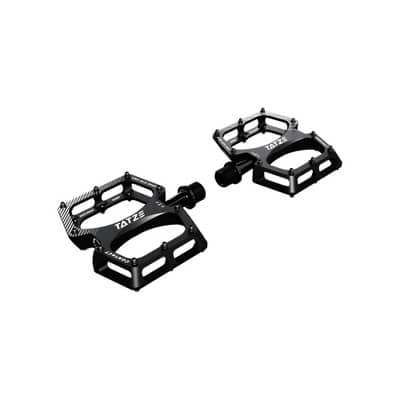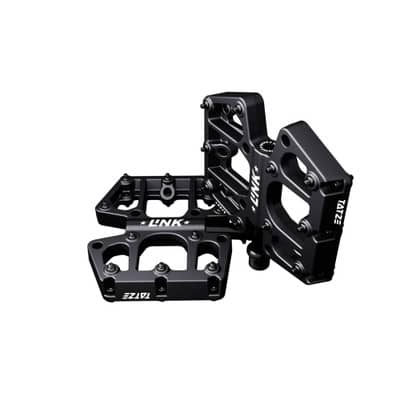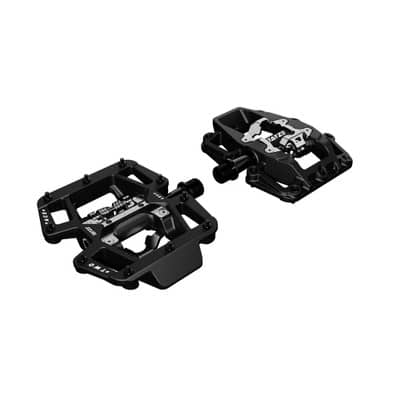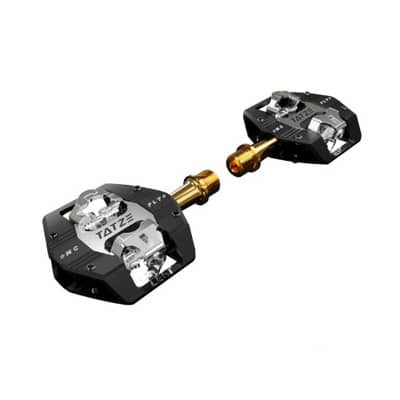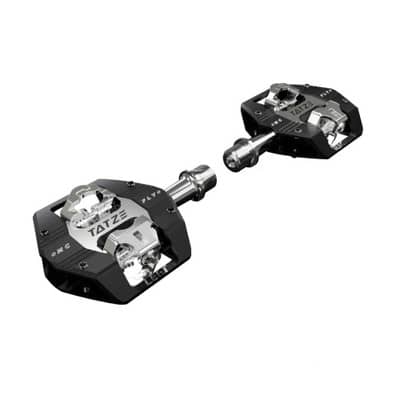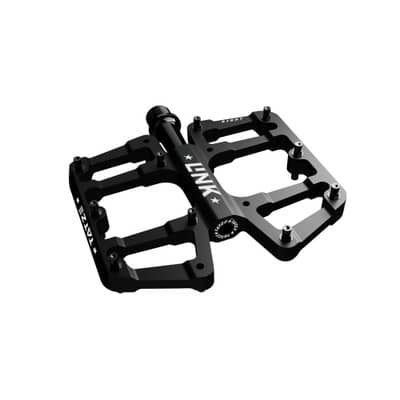-15%
29,50 € 25,10 €*
excl. shipping costs
Lieferzeit: Currently not available
- ...
- ...
- ...
- ...
What is special about TATZE?
Tatze is known for its independent pedal developments. TATZE wants to combine uphill and downhill performance in one product and thus fully utilise the potential of modern trail bikes in every terrain situation. Weight, stability, impact resistance, durability and design are important. The aim is to produce innovative, high-quality and stylish pedals.
In order to achieve all these goals, TATZE has the following 4 development and quality assurance stages:
- SIMULATION: All TATZEN pedals are built and simulated as 3D CAD models. This allows stress peaks in the pedal to be localised and impact simulations reveal potential breaking points.
- PEDAL TESTING STAND: According to the applicable ISO standard, every mountain bike pedal must pass three tests. All tests can be carried out on the specially designed TATZE test stand with more than twice the standard load. The tests are therefore carried out exactly according to the standard, but the loads are set significantly higher.
- TEST RIDE: Once the prototypes have passed all the tests on the test stand, they are bolted to the bike. All ideas for TATZE innovations are developed on the bike to improve performance on the trail. That's why it goes without saying that we undertake extensive test rides at all stages of development.
- CERTIFIED TESTING INSTITUTE: Even if we are already absolutely sure after stages 1-3 that our pedals can withstand far more than the required standard loads, it is always good to have the test professionals from the Zedler Institute, where many tests of renowned bike magazines are also carried out, test them again. Only when we have the official test seal in our hands will the TATZEN be delivered.
What is tested in the test procedure?
During the impact test (side B), the pedal is subjected to the greatest stress, as a hardened steel wedge falls directly onto the clamped pedal. The pedal may deform but must not break and the bearing must remain free to move. This test ensures that the pedal does not break or stiffen even in extreme situations.
The static strength test (side A) is comparatively simple, but the pedal must return to its original state after the load. There must therefore be no permanent deformation. In practice, it is not uncommon for an axle to exhibit slight asymmetry after high loads.
Finally, there is the dynamic strength test (page A), which is nothing more than a bearing test. The TATZEN rotates at 100 rpm for 20 hours under a load of 90 kg. That is a total of 120,000 revolutions to prove the wear resistance.

